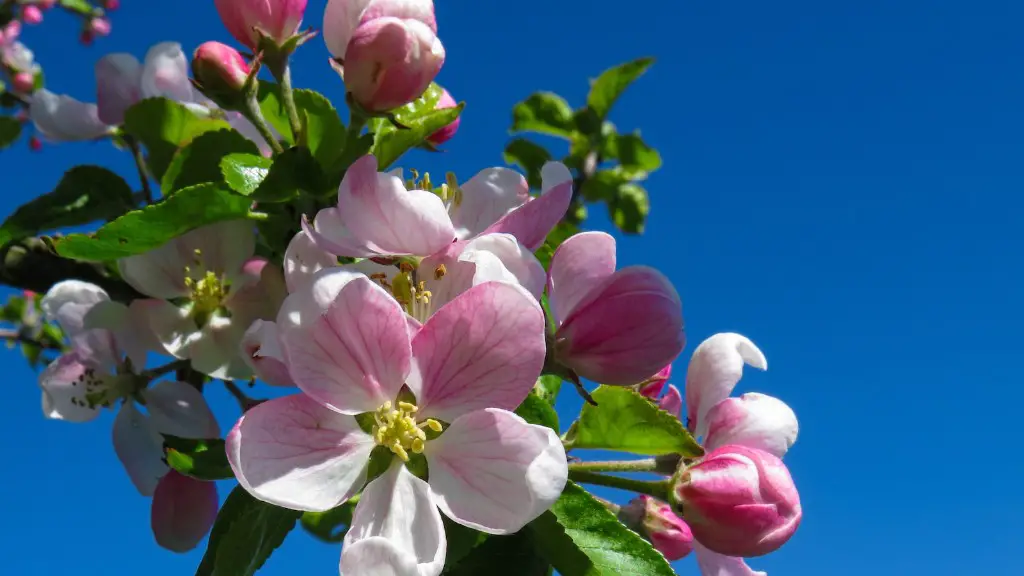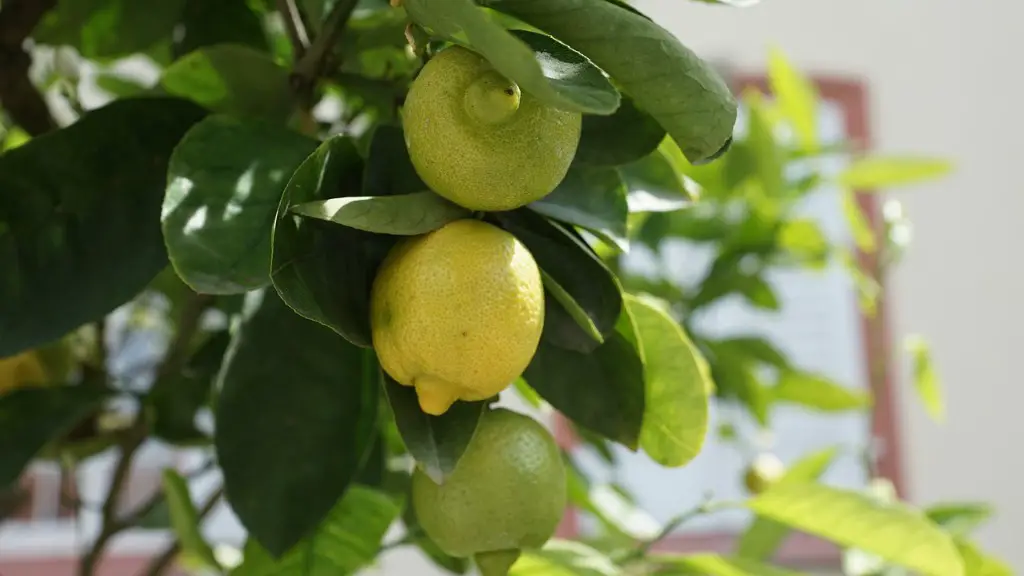One of the biggest questions home gardeners face when it comes to trees is ‘which apple tree to plant?’. There are a variety of apples available, each with their own characteristics, growing requirements and benefits. This article will examine the different types of apples and which trees are best for different locations.
It is important to consider the different factors when selecting an apple tree. Location is of utmost importance as this is the primary factor in determining what type of apple tree can be grown. Different types of apple trees thrive in different areas. For example, some apple trees may require full sun and thrive in subtropical climates, while other trees prefer shade and grow better in cooler climates. It is also important to consider the location’s hardiness zone to ensure the apple tree will survive.
In addition to location, soil type is also important when deciding which apple tree to plant. Different apple varieties require different types of soil and nutrient levels. Apple trees can require different levels of soil pH and different combinations of nutrients. It is also important to consider the soil quality and drainage.
When it comes to selecting an apple tree, there are a variety of apple varieties to choose from. Apples come in a variety of colors, shapes, and sizes. There are also different types of apples with different flavors and textures. In addition, some apple trees require cross-pollination, meaning you must plant two different varieties in order to get fruit.
Finally, an important factor to consider when selecting an apple tree is to research the tree’s disease resistance. Different varieties of apples are resistant and susceptible to various apple diseases. By research, which apples are resistant to diseases, home gardeners can be sure to avoid problems with disease in their apple trees.
Apple Variety for Different Locations
Depending on the location, selecting the right apple tree to plant can be the difference between a great harvest, and an abysmal one. As discussed earlier, apples come in a variety of colors, shapes and sizes, and each apple variety has different locational needs. For example, some apples prefer more temperate climates and others need full sun to thrive.
Picking the right apple variety can also depend on the size you want your apple tree to be. Knowing the size of your garden and the space available to the tree is key. Dwarf apple trees can reach between 10 and 15 feet in height and require less space, while standard apple trees can reach heights of up to 30 feet, making them better suited for larger properties.
In some locations, the season may also be an important factor when choosing an apple tree. Certain apple varieties grow better in colder climates and longer growing seasons. For example, Granny Smith and Golden Delicious apples prefer cooler climates and grow best in places with longer growing seasons.
Finally, it is important to consider the time and effort it will take to take care of a particular apple tree. Different apple varieties require different levels of effort and time to maintain. For example, some apple varieties require more pruning, while others require disease-resistant maintenance and spraying.
Disease Resistant Apple Trees
While all apple trees are likely to suffer from pest and disease problems, some apple varieties are known to be more resistance than others. Fortunately, there are several disease-resistant apple trees available at local nurseries. Some of the more popular disease-resistant varieties include Honeycrisp, Red Delicious, and Gala apples.
When selecting a disease-resistant apple tree, it is important to know the common diseases and pests that can affect the tree. For example, a common pest in apple orchards is the woolly apple aphid, which can cause significant damage to the tree if uncontrolled. Knowing what the common pests and diseases are, and finding resistant types, is key in making sure an apple tree produces disease-free fruit.
In addition, apple trees may also require additional treatments to prevent diseases. For example, some apple trees may require spraying with fungicides to prevent diseases such as apple scab, black rot, and powdery mildew. Home gardeners should research the particular apple variety they are planting to find out what type of treatments may be required.
Finally, it is important to select disease-resistant apple trees that are certified. The government may have regulations in place for a certain apple variety, and home gardeners should ensure the tree has been certified for that particular variety. This will help make sure the tree is properly labeled and will provide the home gardener with disease-resistant benefits.
Tools to Maintain Apple Trees
In addition to choosing the right apple tree and ensuring it is free from pests and diseases, it is also important to have the proper tools and equipment to take care of it. Having the correct pruning shears and loppers are essential for basic maintenance of an apple tree. Pruning helps to remove dead or diseased branches and encourages fruit production. In addition, home gardeners may opt to purchase pest control treatments and fungicides to keep their trees healthy.
Adequate water is also essential for apple trees. Apple trees should be watered deeply once a week, depending on the tree’s size and location. Moisture meters are a great tool to help gauge how much water a tree is using. Moisture meters will give a good idea of how much water is needed each week and how often.
While fertilizing apple trees is not essential, it can be done in some instances. Home gardeners should select a fertilizer based on the type of soil their apple tree is growing in and their particular location and climate. Organic fertilizers are an excellent choice for apple trees as they provide the necessary nutrients for a healthy tree.
Finally, it is important to protect the apple tree from any environmental damage. Plastic deer fencing or bird netting can be used to keep animals away from the tree, as well as protecting it from wind and other weather damage.
Apple Tree Harvest
When harvesting apples, home gardeners should be sure their apples are ripe. Apples ripen at different times, depending on the variety, and it is important to know when the apples should be picked. Generally, the apples will turn color and will be soft when they are ripe.
It is also important to check the apples for signs of pests or diseases. If any signs of pests or disease are detected, the apples should not be consumed. Home gardeners should also check that the apples are completely mature before they are picked and remove any diseased or damaged fruit.
Harvesting apples can be done by hand, or with a picking bag. Apples should be harvested in the morning or late evening when the temperatures are cooler. Home gardeners should use their hands or the picking bag to gently pluck the apples off the tree and place them in a basket or container for transport.
Finally, once the apples have been plucked from the tree, they should be kept in a cool, dry place until ready to use. Depending on the type of apple, the fruit can last for several weeks in the refrigerator or for months when frozen.
Apple Tree Disease Management
Apple trees may be subject to various pests and diseases, and it is important to be aware of the common problems that can affect a tree. Apple scab is one of the most common diseases of apple trees, and is caused by the bacterium Venturia inaequalis. Symptoms include yellow or brown spots on the leaves which may lead to premature leaf drop.
Apple fireblight is another common disease of apple trees caused by a bacterium, Erwinia amylovora. Symptoms of apple fire blight include reddish-brown lesions on the leaves, shoots, and fruit. The disease is spread through rain and irrigation, and can cause significant damage to the tree and fruit.
Other common pests of apple trees include aphids, mites, and caterpillars. Home gardeners should regularly inspect their apple trees for signs of pests or disease and take appropriate action if necessary. Pruning and removing diseased or damaged portions of the tree can help to prevent the spread of the disease.
In addition, home gardeners may also opt to use fungicides or insecticides to prevent and control pests and disease. Fungicides and insecticides are best used according to the manufacturer’s directions. Home gardeners should also ensure that their items are up to date and that the products are being used correctly.
Organic Apple Tree Care
Organic apple tree care is an excellent option for home gardeners looking to protect the health of the tree and the surrounding environment. Organic methods of care use natural products to help prevent and control pests and diseases, as well as promoting healthy growth of the tree.
Organic fertilizers are a great choice for apple trees as they provide essential nutrients for growth. Manure and compost can be used to enhance the soil and nutrients available to the tree. Organic mulch can also be used to help keep the roots moist and regulate soil temperature.
Organic methods of pest and disease control are also important when it comes to apple trees. This includes introducing beneficial insects into the garden to control pest populations, as well as hand weeding and using natural compost extracts and teas. Using beneficial insects is an excellent way to naturally control pests and diseases, while hand weeding helps to reduce the spread of disease in the orchard.
Finally, it is important to maintain hygiene in the orchard. Pruning should be done regularly to remove dead branches and encourage healthy growth. In addition, home gardeners should regularly remove any dead or diseased fruit from the tree and dispose of them properly.
Planting Apple Trees in Containers
Home gardeners who have limited space may find that planting apple trees in containers is a great option. Containers provide a way for growers to grow a healthy apple tree without needing to take up garden space.
When planting in a container, it is important to select a pot that is the correct size for the tree. A large, 8-10 inch pot is generally the best size for apple trees. Larger pots require more soil and water, and not enough water can cause stress in the tree.
In addition, when potting the tree, it is important to use a soil mixture that is well-draining and free from pests and diseases. Home gardeners should also ensure that the tree is properly watered and fertilized to maintain the tree’s health.
Finally, it is important to note that container-grown apple trees may require additional protection from grazing animals and pests. A fence can be used to keep animals away from the tree, while a netting can be used to protect the tree from bird damage.
Growing Container Apple Trees Indoors
Container apple trees require more attention than those planted directly in the ground. When grown indoors, apple trees require more light and continuous monitoring to ensure they are healthy.
One of the most important aspects of growing an indoor apple tree is selecting a good location. The tree should be placed in an area that receives plenty of light and is easily accessible for pruning and maintenance.
When watering indoor apple trees, be sure to use lukewarm water. This helps to protect the trees from shock when transferring from hot to cold temperatures.
In addition, indoor apple trees often require special soil and fertilizer to ensure the tree remains healthy. Home gardeners should research and select the correct soil and fertilizer for their particular location.
Finally, it is important to regularly inspect indoor apple trees for signs of pests or disease. If any signs of pests or disease appear, the tree should be treated with an appropriate organic pesticide or fungicide.





